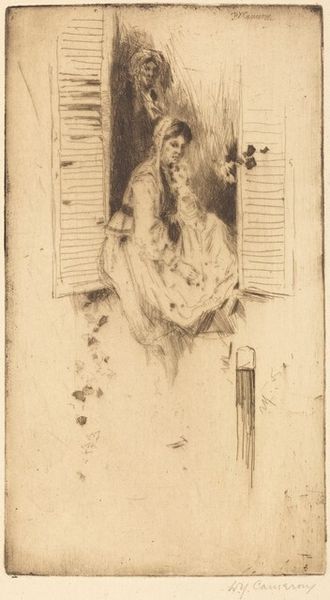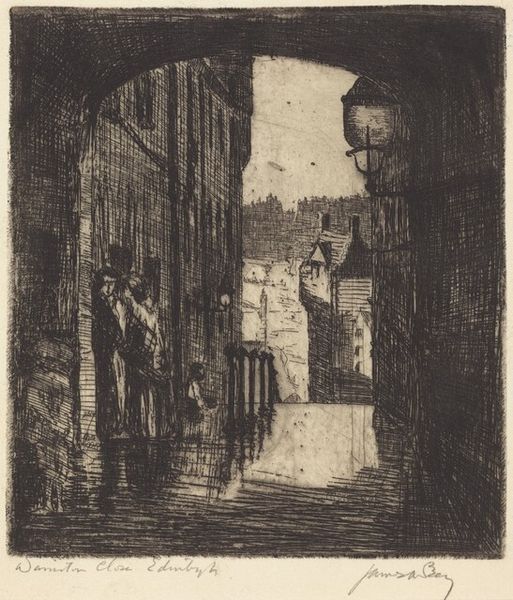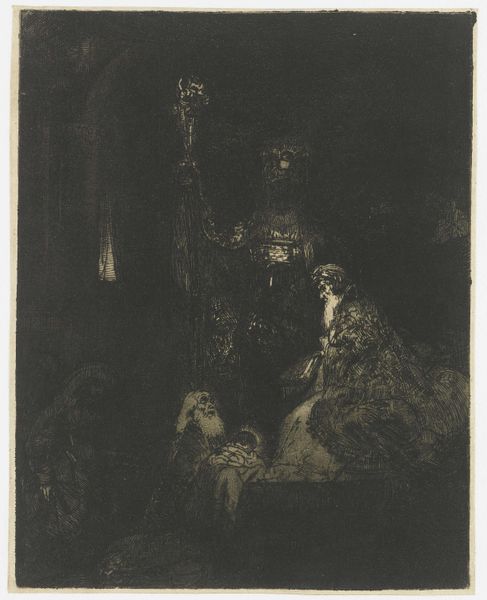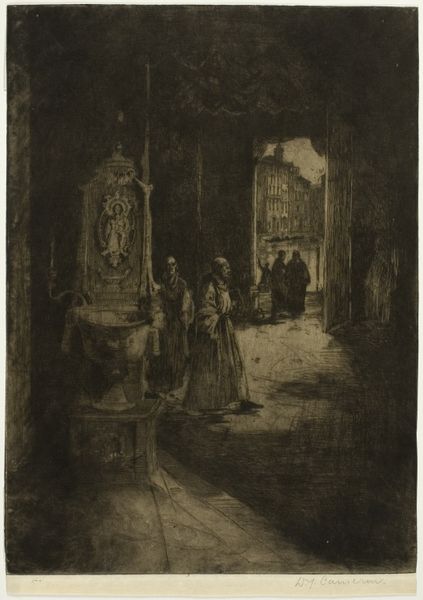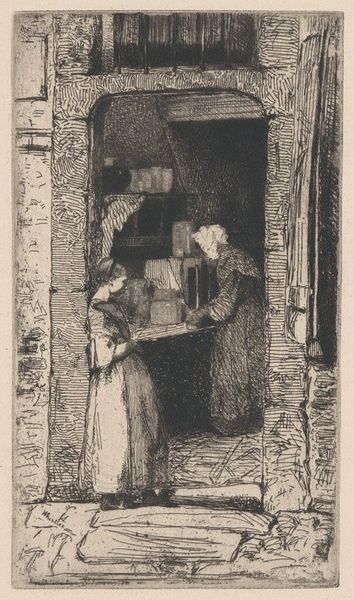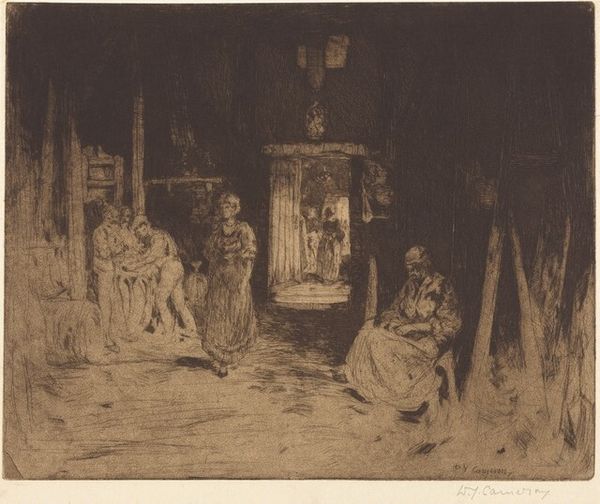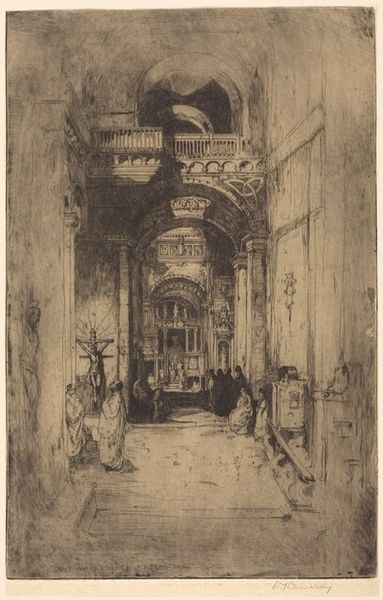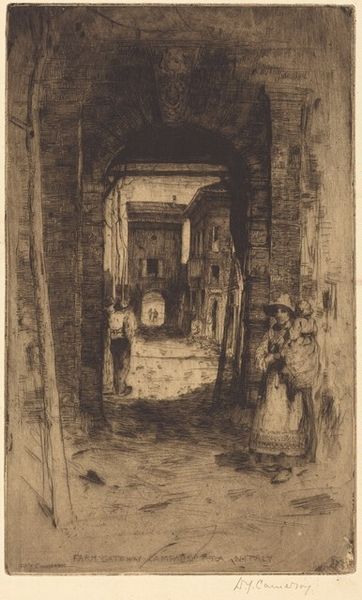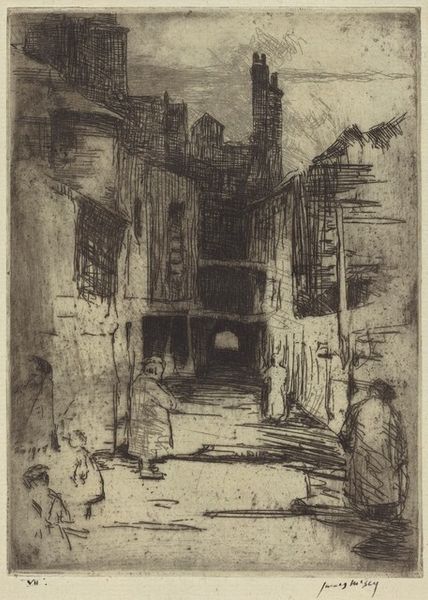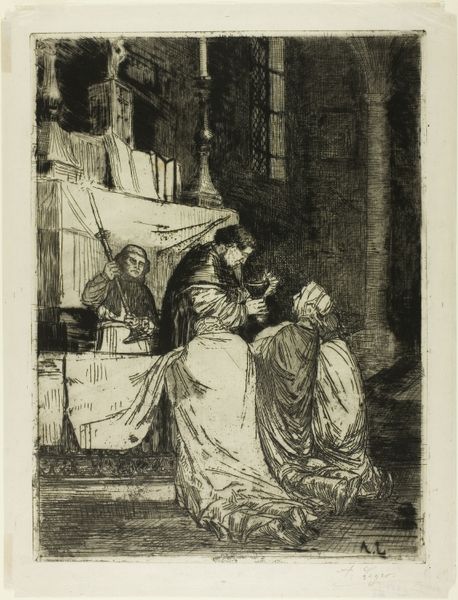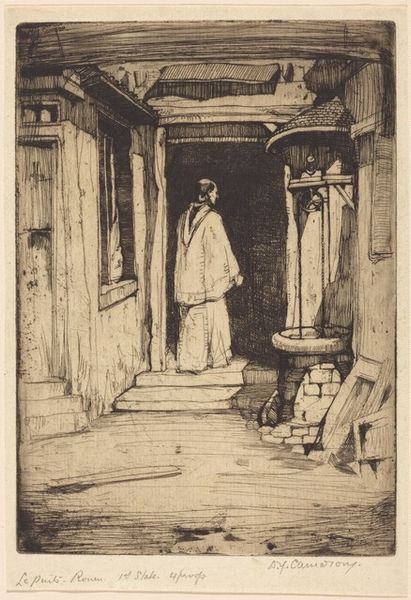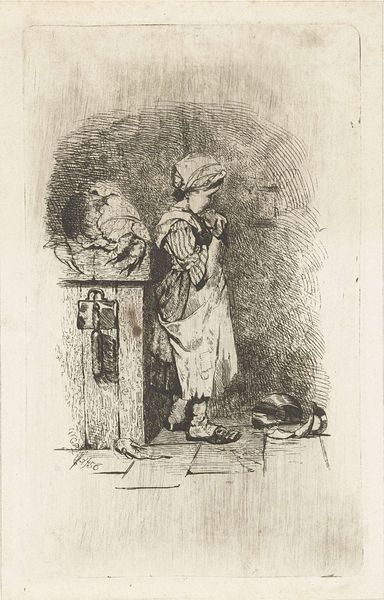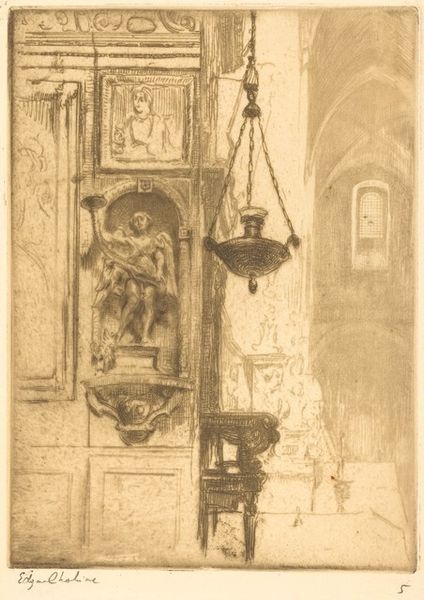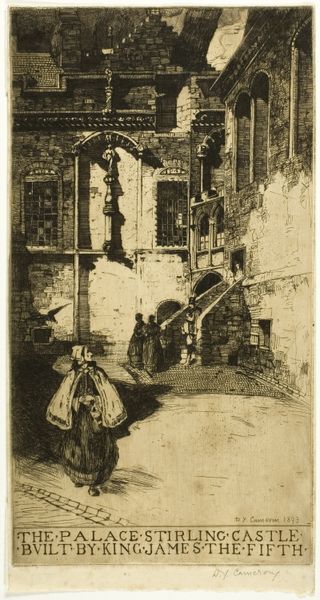
drawing, print, etching, pen
#
drawing
# print
#
etching
#
pen
#
genre-painting
#
realism
Copyright: National Gallery of Art: CC0 1.0
Editor: This is "The Confessional," an etching by David Young Cameron from 1896. It depicts a woman at a confessional in what seems to be a very ornate church. There’s a real sense of drama, especially with the stark light and shadow. What strikes me most is the level of detail Cameron achieved with etching – it's almost photographic. What's your take on it? Curator: It's crucial to analyze Cameron's printmaking within the broader context of late 19th-century print production. How did etching become democratized as a medium? Cameron's work highlights a key shift: the industrialization of art and the expanding market for readily available, visually engaging images. The lines themselves speak to a mechanical process, of applying acid to a metal plate, repeatable, replicable, designed for mass distribution. Does this lessen its artistic merit or shift its value in an expanding visual culture? Editor: That's a really interesting way to look at it! I hadn't thought about the print as a commodity in that sense. So, you’re suggesting the subject matter, this moment of private confession, is almost secondary to the accessibility and mass production of the image itself? Curator: Precisely. Consider the socio-economic factors. Religious institutions held immense cultural power; they represented a significant market for devotional imagery, did they not? But beyond serving that traditional patronage system, prints such as these spoke to individual viewers outside religious spaces as affordable reflections of piety and morality in the household. What happens to those ideas as the process is reproduced? Is the image devalued through mass availability? Editor: So it's almost a critique of the industrial age, veiled as a genre painting, reproduced on demand? I guess that does recontextualize what confession means here. Curator: Yes, questioning not just the image but the very method by which such a private practice is so widely shared. Hopefully, considering his methodology of production makes us see something further of its nature and intention.
Comments
No comments
Be the first to comment and join the conversation on the ultimate creative platform.
